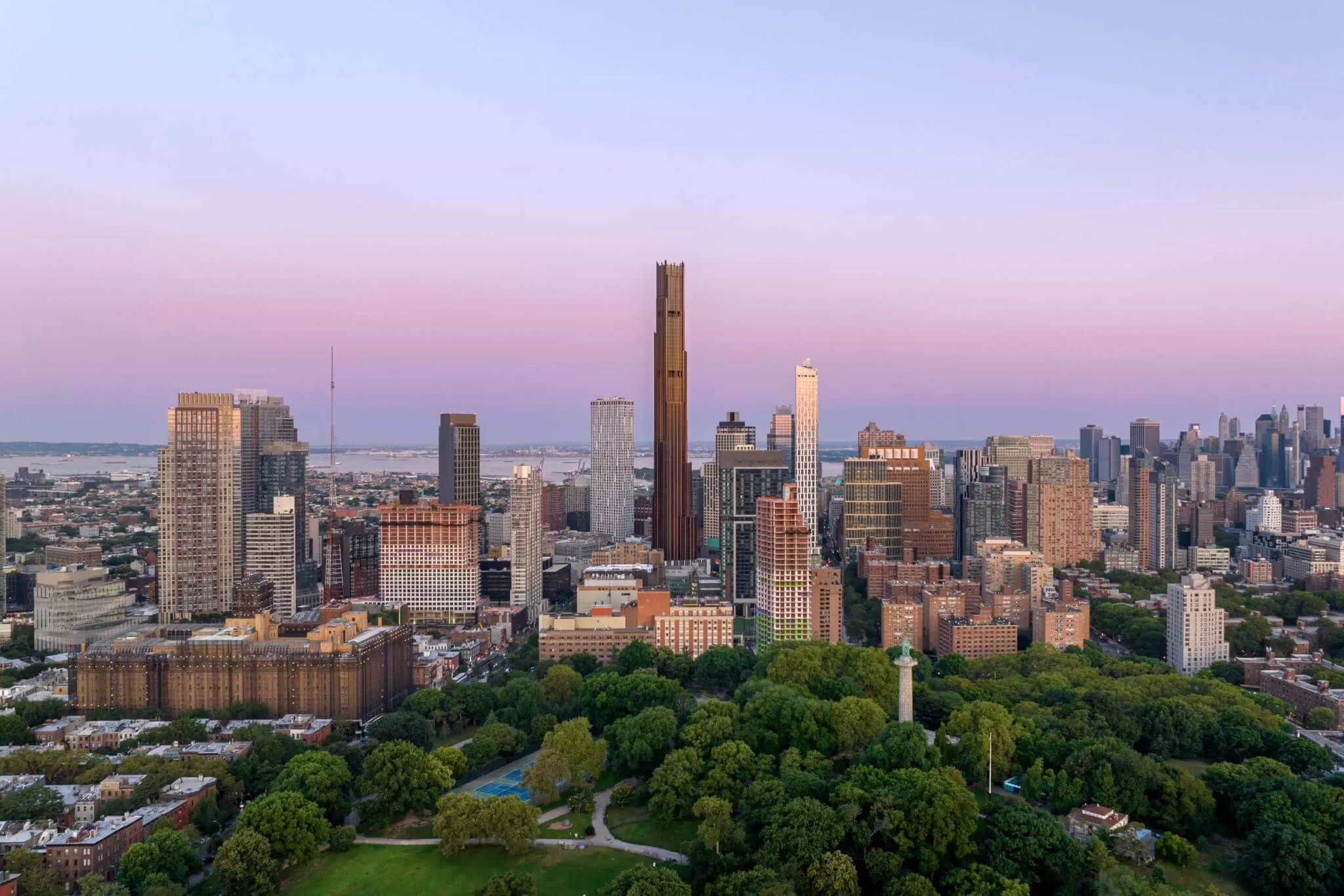The Brooklyn Tower, a remarkable architectural creation situated in the heart of Brooklyn, stands tall and commanding, becoming a defining feature of the borough’s evolving skyline. Designed by the renowned architectural firm SHoP and developed by JDS Development Group, this iconic structure has become an inescapable element in the daily lives of Brooklyn residents, making its presence undeniably felt.

A Skyline Transformation:
The Brooklyn Tower’s construction marks a significant milestone in the transformation of Brooklyn’s skyline. As the tallest building in the borough, it serves as a focal point, a symbol of progress, and a beacon of change. Its towering height, combined with its distinct architectural design, creates a visual crescendo in the heart of downtown Brooklyn, drawing attention and sparking discussions about the future of urban development in the borough. While some celebrate its contribution to Brooklyn’s reputation as a hub for modern architecture, others see it as a stark reminder of the income disparities that persist in the heart of the city.

The Economics of Real Estate Speculation:
The Brooklyn Tower’s presence has not been without controversy, largely due to the economic dynamics underpinning its construction. Driven by real estate speculation, it raises important questions about affordability and accessibility in a rapidly changing urban landscape. While the tower includes a limited number of affordable units allocated through a lottery system, even these units are often deemed relatively expensive. Monthly rents for these affordable studios start at $2,630, placing them beyond the financial reach of many working-class residents. Market-rate units, with studios starting at $3,529, command even higher prices. For potential buyers, prices begin at $950,000 for a 574-square-foot studio, a price per square foot that reaches a staggering $1,655. To provide some context, the median sale price per square foot for listings in Brooklyn as a whole was a mere $697 in August 2023.

Architectural Marvels:
The Brooklyn Tower’s design is a striking fusion of architectural influences, combining elements of Gothic Revival and Art Deco sensibilities. Drawing inspiration from nearby landmarks, it takes cues from the historic Dime Savings Bank, designed by Mowbray & Uffinger and completed in 1908. Hexagonal patterns inscribed in the bank’s interior and the dome’s six-sided drum provided the geometric references that the Brooklyn Tower incorporates seamlessly. Both the floor plates and apartment plans feature hexagonal elements, creating a harmonious connection between old and new.
Interior Excellence:
The attention to detail in the Brooklyn Tower extends beyond its exterior. The interiors, designed by Woods Bagot under the leadership of Krista Ninivaggi, are a testament to thoughtful and considered design. Every aspect of the shared spaces, from the “kiss and go” pods for waiting Uber rides to the ceiling of the elevator lobby adorned with custom oversized dime tiles, has been meticulously designed to enhance the resident experience.

A Fortress of Capitalism or a Symbol of Progress?:
The Brooklyn Tower’s imposing presence and dark glass exterior have led to various comparisons, from the ominous towers of Mordor in “The Lord of the Rings” to the bustling Galactic Capital of Coruscant in “Star Wars.” The solid pilasters, along with the spiky profile created by the balconies spiraling around the perimeter, contribute to the sense of a fortified structure. The slotted apertures on double-height open floors, designed to reduce wind loads, add to the architectural intrigue. While these spaces will serve as amenities such as basketball courts or sky parks for residents, their appearance conjures imagery of fortifications and defensive structures.
A Glimpse into Architectural History:
The Brooklyn Tower pays homage to the architectural history of New York. Its design draws parallels to the American Radiator Building, completed in 1924, known for its dark brick and gold accents. This fusion of historical elements with modern design principles creates a captivating aesthetic that not only captures the eye but also ignites conversations about the coexistence of past and present.

The Brooklyn Tower’s Legacy:
In the grand tapestry of Brooklyn’s urban landscape, the Brooklyn Tower stands as a monument to change and economic complexities. It is a landmark that both shapes and reflects the borough’s development, reminding us of the ongoing challenges related to affordability and income inequality. Opinions on its design and significance may differ, but there is no denying that the Brooklyn Tower has made an indelible mark on Brooklyn’s ever-evolving cityscape. As it continues to rise above the skyline, it remains a testament to the intricate interplay between urban progress and the economic realities of contemporary city living. It is a reflection of Brooklyn’s bold steps toward a future where economic disparities are not forgotten, but where they are addressed and incorporated into the ever-evolving tapestry of the borough. The Brooklyn Tower stands tall as a symbol of change and a reminder of the complex web of economic, architectural, and societal factors that shape the urban landscape. It is a testament to the ongoing conversation about the future of cities and the challenges they face in striving for inclusivity, sustainability, and progress.





